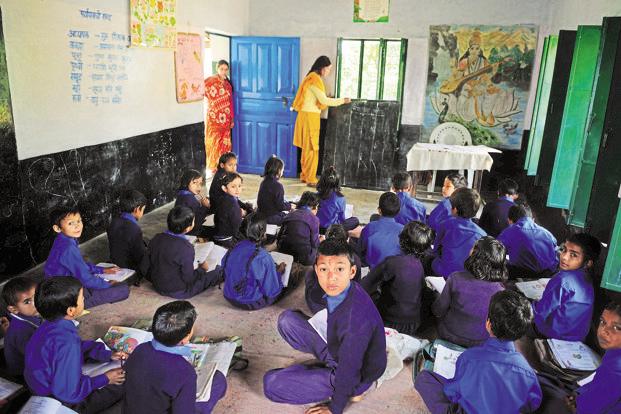Indian public schools are seeing a systemic decline in enrolment, resulting in the massive growth of small and tiny government schools. According to a recent article by economist Geeta Kingdon, 419,000 (40%) of government schools had total enrolment less than 50, and 108,000 schools (10.3%) were “tiny” schools with enrolment of less than 20. Although the Indian public school system has addressed the problem of access, it has failed to withstand competition from private schools. These failures of the public school system call for an overhaul of the structure of schooling in India, especially at a time when the new education policy (NEP) is being drafted by the Kasturirangan committee.
Physical access to neighbourhood schools is now a reality, with 96% of the villages having an elementary school within a radius of 3km. However, physical access does not ensure adequate learning. Ten years of annual survey of education report (Aser) surveys and national achievement surveys by the National Council of Educational Research and Training (NCERT) have revealed a nationwide learning crisis. The first to exit dysfunctional public schools are those from better socio-economic classes, and the disadvantaged suffer. Studies have revealed that students drop out mainly because schools are not attractive physically and pedagogically. Better learning outcomes need functional schools—not just mere physical access.
The right to education (RTE) Act has defined norms for providing functional access such as pupil-teacher ratio, teacher qualification and infrastructure facilities such as availability of toilets, drinking water, library and playgrounds. However, in addition, we need enough teachers and staff per school, subject teachers in the higher grades, and pedagogical support for the teaching-learning process to make the schools functional.
The complex school organization structure across different levels, such as primary, upper primary and secondary schools, and multiple managements (within government and private) break the continuity in schooling, leading to higher dropout rates. There is no need to have separate primary-only schools when the constitutional mandate is completion of primary and upper-primary classes up to class VIII. With universalization of secondary education on the table, schools from primary to secondary should be integrated and secondary education should integrate vocational education to provide gainful employment.
Composite schools can be created through vertical integration across levels and a consolidation of neighbourhood schools to increase school size, ensure better rationalization of teachers and avoid multi-grade teaching. Consolidation brings efficiency, provides better facilities, trained teachers, more comprehensive curriculum, broader extracurricular activities and diverse social experience.
Many states such, as Andhra Pradesh, Rajasthan, Odisha, Himachal Pradesh and Maharashtra, have attempted to consolidate the schools (under names such as school rationalization, mainstreaming, amalgamation and integration) at the primary and upper-primary levels. Rajasthan has undertaken school mergers on the largest scale. About 17,000 schools were ordered to be merged, out of which 12,944 primary and 1,728 upper-primary ones had been merged as of 2016. However, these attempts have been made without adequate study of the need for consolidation and its impact on children in local communities.
School location decisions have to consider the optimal match of schooling demand with supply in the neighbourhood without compromising functional access. The following guiding principles could be followed for consolidation and restructuring: 1. Create before you destroy—construct a functional school infrastructure and appoint teachers in the consolidated school prior to shutting down schools; 2. No child left behind—school consolidation should not result in denial of access to any child; all possible transportation options should be explored, in case consolidation leads to difficulty in physical access; 3. Consult before consolidation—consolidation must be done with the consent of the community through consultations, and the alternative must include consensus on school location, transportation, etc.; 4. Vertical integration—school consolidation should ensure vertical integration across different levels.
Current norms for neighbourhood limits for schools are at different levels: primary schools within 1km, upper-primary schools within 3km and secondary schools within 5km. A common norm for all levels of schooling, with adequate flexibility to suit local conditions, could ensure vertical integration. Administratively, this requires the merger of Sarva Shiksha Abhiyan (SSA) and Rashtriya Madhyamik Shiksha Abhiyan (RMSA) at the Centre (which the ministry of human resource development is contemplating), and primary and secondary education bodies under the departments of education in states.
The Central and state governments should act as facilitators for consolidation and desist from taking a one-size-fits-all approach. Consolidation should be a local exercise—best decided by local authorities. The state governments should act as facilitators to the process of school rationalization by providing technical and financial support and capacity-building of local authorities.
[“Source-livemint”]






